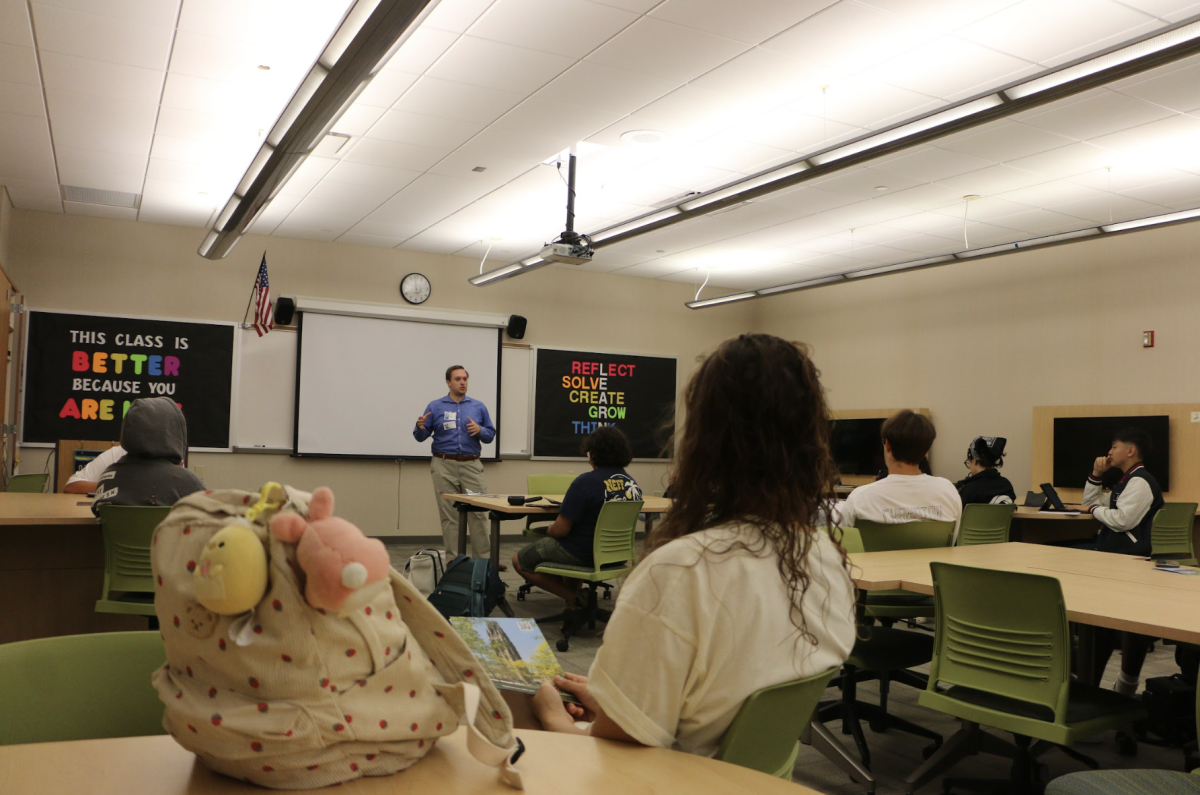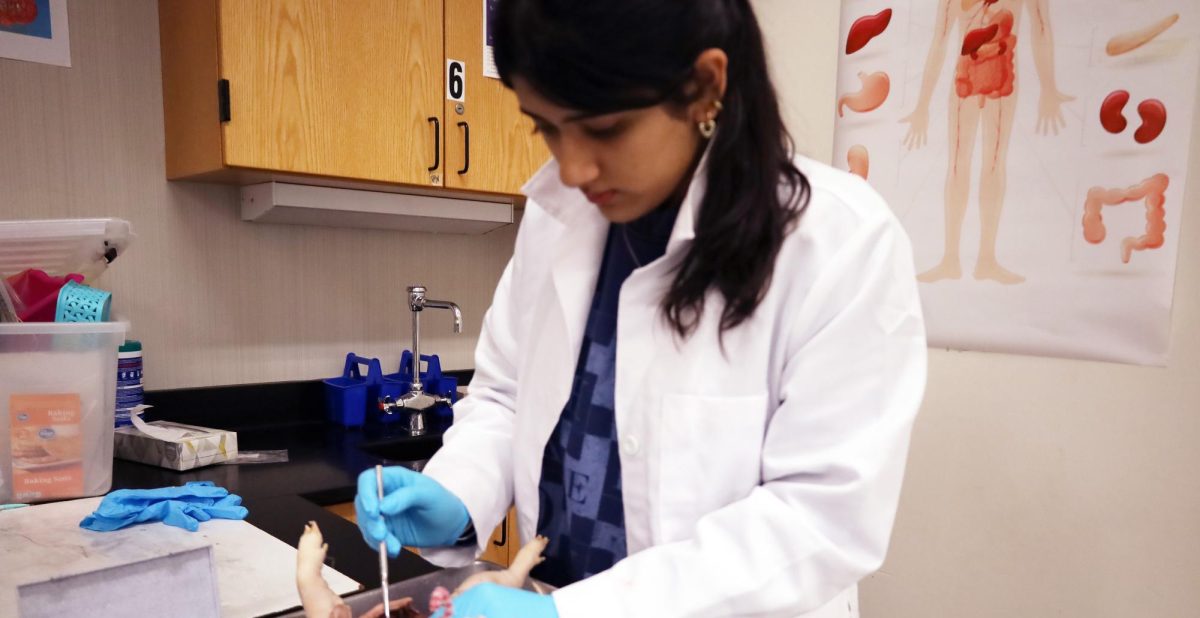
By Sara Rogers
Most of the five to 20 percent of Americans that the influenza virus infects each year experience symptoms for only a few days. Junior Shanna Smith doesn’t get off so easily. “Almost nine times out of ten, I will get (the flu) for at least two weeks,” she said.
Smith was diagnosed with Chronic Fatigue Syndrome (CFS) in seventh grade.
“I got (mononucleosis) somehow, and it weakened my immune system, letting in a virus that weakened me even more,” she said. “Somehow in all of this I got CFS, and it’s been with me ever since.”
Smith is just one person who will benefit from the flu vaccine this year.
“I do get the vaccine. Either way I will get the flu, but with it (the flu) will be less severe, and I can pull through it a little bit quicker.”
For the 2008 flu season, usually spanning from late November to early May, the Center for Disease Control and Prevention (CDC) recommended the flu vaccine to almost 85 percent of the United States population.
“Students, health care providers, people who care for young children, anyone over the age of 50, people with medical conditions that put them at a higher risk for complications with the flu, people who live in dormitory settings and anyone else who wants to prevent themselves from getting the flu, should get the vaccine,” school nurse Carol Gelatt said.
Symptoms of the flu include a fever (usually high), a sore throat, chills, a cough, muscle aches, headaches and fatigue. “Stay at home if you have a fever of over 100 degrees,” Gelatt said.
Recently the CDC began emphasizing the importance for students to get the vaccination. This year, they recommended that almost everyone between six months to 18 years of age be vaccinated.
“The reason for that is that there is a high rate of communicability in schools. If we can control (the flu) in schools, hopefully we can control it in our homes and communities,” Gelatt said.
In 2008, an estimated 143 to 146 million doses of the influenza vaccine should be available to the public, an all-time high. This year, two different forms of the flu vaccine are available. The first form is the flu shot. This is given through a needle by injection and contains an inactivated (killed) virus. This version of the vaccine is usually covered by a person’s medical insurance, according to the Mayo Clinic.
The second form is a spray, commonly referred to as FluMist. This vaccine is administered through a spray into the nostrils. The spray contains a live, attenuated (weakened) influenza virus. A person’s medical insurance may not cover FluMist.
According to Gelatt, it is important to get the vaccine annually. “The CDC comes up with different strains of the virus each year. They choose the strain they think is most prominent globally to use for the vaccine,” she said.
“The influenza virus is constantly mutating,” biology teacher Cindy Radaker, said. Radaker encourages students to get the influenza vaccine. “I wish all students would (get the vaccine),” she said. “So many people come to school sick and if students had immunization, then that could reduce the possibility of that type of the flu.”
Gelatt said, “It is important that students get the vaccine to help prevent them from getting influenza.” However, Gelatt said, there are some common misconceptions associated with the vaccine. “Some people say ‘I always get the flu when I get (the vaccine)’ but, it is an inactivated virus so you can’t get the flu from the vaccine itself,” she said.
Most likely, she said that “they were probably exposed to the flu prior to getting the vaccine therefore their body did not have a chance to develop protection.”
The CDC encourages students to get immunized between October and November. “You can get vaccinated anytime really, but the best time is now. It takes about two weeks for the vaccination to take effect,” Gelatt said. “That’s why it’s recommended around this time of year before flu season begins.”
According to Gelatt, vaccines are available through the Visiting Nurse Service (VNS), various Medchecks, doctor’s offices as well as other health departments.
This year, the nursing staff here gave vaccinations prior to the football game against Ben Davis on Oct. 17. Around 270 staff members were immunized.
Aside from the vaccine, there are other ways to prevent the spread of influenza. “When students come to school sick, every breath they take, every surface they touch can spread the virus,” Radaker said.
Gelatt advises students to wash their hands, eating a balanced dietand getting enough rest to prevent contracting illness.
With flu season underway, the CDC especially recommends students to get immunized against this year’s strains of the virus.
Smith said, “I think that (students) should take the time, because as much as you think it’s ‘just the flu’ it can harm you and possibly harm your immune system so much that you can get what I have or something so much worse, and no one deserves that.”































!["Wicked" poster controversy sparks a debate about the importance of accuracy versus artistic freedom [opinion]](https://hilite.org/wp-content/uploads/2024/11/riva-perspective-cover-1200x471.jpg)


![Chilling or Childish? The downfall of modern horror movies [opinion]](https://hilite.org/wp-content/uploads/2024/10/adjusted-horror-cover-1200x471.jpg)
![“Uglies” is a call for change in the YA dystopian genre [opinion]](https://hilite.org/wp-content/uploads/2024/10/Perspectives-Cover-1200x471.jpg)












































![Review: Indy Scream Park is a perfect level of spook to kickstart the Halloween season [MUSE]](https://hilite.org/wp-content/uploads/2024/11/IMG_1383.jpg)
![Review: “Saturday Night” is a chaotic and thrilling look at the origins of “Saturday Night Live” [MUSE]](https://hilite.org/wp-content/uploads/2024/10/snl-1200x800.jpg)
![Review: “Megalopolis” is a bold, bewildering mess [MUSE]](https://hilite.org/wp-content/uploads/2024/10/MV5BYTk3MjUzMGItYmU1NC00M2YyLThmNDMtNDI4NjkxNjgzMjQzXkEyXkFqcGdeQXRyYW5zY29kZS13b3JrZmxvdw@@._V1_-1200x675.jpg)
![Review in Print: Maripaz Villar brings a delightfully unique style to the world of WEBTOON [MUSE]](https://hilite.org/wp-content/uploads/2023/12/maripazcover-1200x960.jpg)
![Review: “The Sword of Kaigen” is a masterpiece [MUSE]](https://hilite.org/wp-content/uploads/2023/11/Screenshot-2023-11-26-201051.png)
![Review: Gateron Oil Kings, great linear switches, okay price [MUSE]](https://hilite.org/wp-content/uploads/2023/11/Screenshot-2023-11-26-200553.png)
![Review: “A Haunting in Venice” is a significant improvement from other Agatha Christie adaptations [MUSE]](https://hilite.org/wp-content/uploads/2023/11/e7ee2938a6d422669771bce6d8088521.jpg)
![Review: A Thanksgiving story from elementary school, still just as interesting [MUSE]](https://hilite.org/wp-content/uploads/2023/11/Screenshot-2023-11-26-195514-987x1200.png)
![Review: "When I Fly Towards You", cute, uplifting youth drama [MUSE]](https://hilite.org/wp-content/uploads/2023/09/When-I-Fly-Towards-You-Chinese-drama.png)
![Postcards from Muse: Hawaii Travel Diary [MUSE]](https://hilite.org/wp-content/uploads/2023/09/My-project-1-1200x1200.jpg)
![Review: "Ladybug & Cat Noir: The Movie," departure from original show [MUSE]](https://hilite.org/wp-content/uploads/2023/09/Ladybug__Cat_Noir_-_The_Movie_poster.jpg)
![Review in Print: "Hidden Love" is the cute, uplifting drama everyone needs [MUSE]](https://hilite.org/wp-content/uploads/2023/09/hiddenlovecover-e1693597208225-1030x1200.png)
![Review in Print: "Heartstopper" is the heartwarming queer romance we all need [MUSE]](https://hilite.org/wp-content/uploads/2023/08/museheartstoppercover-1200x654.png)





